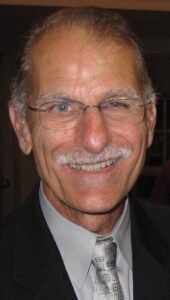 Possible Revolutionary War Soldier Burials, Ridgefield, CT
Possible Revolutionary War Soldier Burials, Ridgefield, CT
In December 2019, the discovery of skeletal remains beneath an early 18th Century house near the site of a pivotal Revolutionary War battle could be the first time in state history that soldiers from the Revolution have had their remains recovered from the field of battle.
Subsequent excavations by the interim state archaeologist, Nick Bellantoni, with assistance from the Friends of the Office of State Archaeology, Inc., and University of Connecticut graduate students, have yielded skeletons of robust adult men lying in a mass grave that appears to be haphazardly dug. The burials are located in the area of the Revolutionary War Battle of Ridgefield (April 27, 1777) and may be associated with the battle.
The current state archaeologist and the state archaeologist emeritus will discuss the Battle of Ridgefield, archaeological excavations, material culture studies and the projected forensic analyses of these potential military burials.
Dr. Nicholas F. Bellantoni serves as the emeritus state archaeologist with the Connecticut State Museum of Natural History at the University of Connecticut. He received his doctorate in anthropology from UConn in 1987 and was shortly thereafter appointed state archaeologist. His duties primarily included the preservation of archaeological sites in the state. He serves as an Adjunct Associate Research Professor in the Department of Anthropology at UConn and resided as former presidents of the Archaeological Society of Connecticut and President of the National Association of State Archeologists.
His research background includes the forensic archaeology and faunal analysis from eastern North America. Nick is the author of two books written for the general public: The Long Journeys Home: The Repatriation of Henry Opukaha’ia and Albert Afraid of Hawk and “And So The Tomb Remained”: Exploring Archaeology and forensic Science Within Connecticut’s Historical Family Mausolea. He has been excavating in Connecticut for almost 40 years.
Speaker suggested by Gary Banks.
Speaker Summary
Nick took us through a fascinating story of an archaeological dig and project he is still currently working on in Ridgefield, CT. In the process, he helped us understand that archaeology is so much more than just digging up old bones and artifacts. It’s an integrated field of study that combines a knowledge of history, several scientific disciplines and technologies, and perseverance that he and those he’s working with are using to turn the discovery of skeletal remains during the renovation of an old home into an investigation of a burial ground from the Revolutionary War in Ridgefield.
Nick opened with a brief explanation of the role of the State Archaeologist and how he became involved in this project after it was determined by the State Police and Medical Examiner that skeletal remains discovered in November 2019 when a dirt cellar floor was being leveled in preparation for further work was not a crime scene. Rather, it was determined the bones were over 100 years old and, therefore, needed to be investigated as a potential archaeological site. Nick noted that, given the location of the bones in Ridgefield and his knowledge of the Revolutionary War in the area, he immediately hypothesized that these remains might be associated with the War. But he also mentioned the importance of not drawing conclusions without the appropriate data to support them – this simply became part of a hypothesis to be explored. In this context, Nick took us through a brief history of the raid on the Danbury arsenal and the Battle of Ridgefield that ensued as the British tried to return to Westport after the raid.
Nick talked about the first step in the analysis of the remains being an initial BioAnthropology Summary of the buried individual including gender, age, size, obvious injuries, etc. to provide insights into who this might be and why they were buried on the site. Based on the findings, including no evidence of obvious injuries or battle artifacts (e.g., musket balls), two hypotheses emerged: Revolutionary War burials or a family burying ground. Shortly thereafter a second and then third and fourth sets of remains were uncovered as part of the excavation of the site by the archaeological team. The somewhat random orientation of the remains and lack of coffin elements lent credence to this being a burial ground for soldiers rather than family members.
Nick talked about some of the technologies they used to explore the larger site including ground-penetrating radar in the yard and basement as well as undertaking diagnostic imaging of the remains to gain further in sights into their identities. He also discussed details about the buttons found and the insights they provided (clearly late 18th century but with no markings referring to military regiments).
Throughout the talk, Nick took us through the process of discovery, exploration, explanation and determination to support or refute hypotheses about what was found. And he showed a list of a broad range of Biological Anthropology approaches and techniques that are employed as part of the analysis, including a detailed discussion of how isotope analysis from teeth and bones can provide helpful insights into determining the source of the bones.
Nick concluded by noting that the summarized data supports the hypothesis of a Revolutionary War burial ground although it lacks a key missing element since there are no signs of trauma or weaponry. The analysis is on-going with the hope that a final report will be completed by the end of this year. If the hypothesis is proven that this is a military burial ground, the remains will be reburied with full military honors, something that is uniquely done for U.S. military remains.
